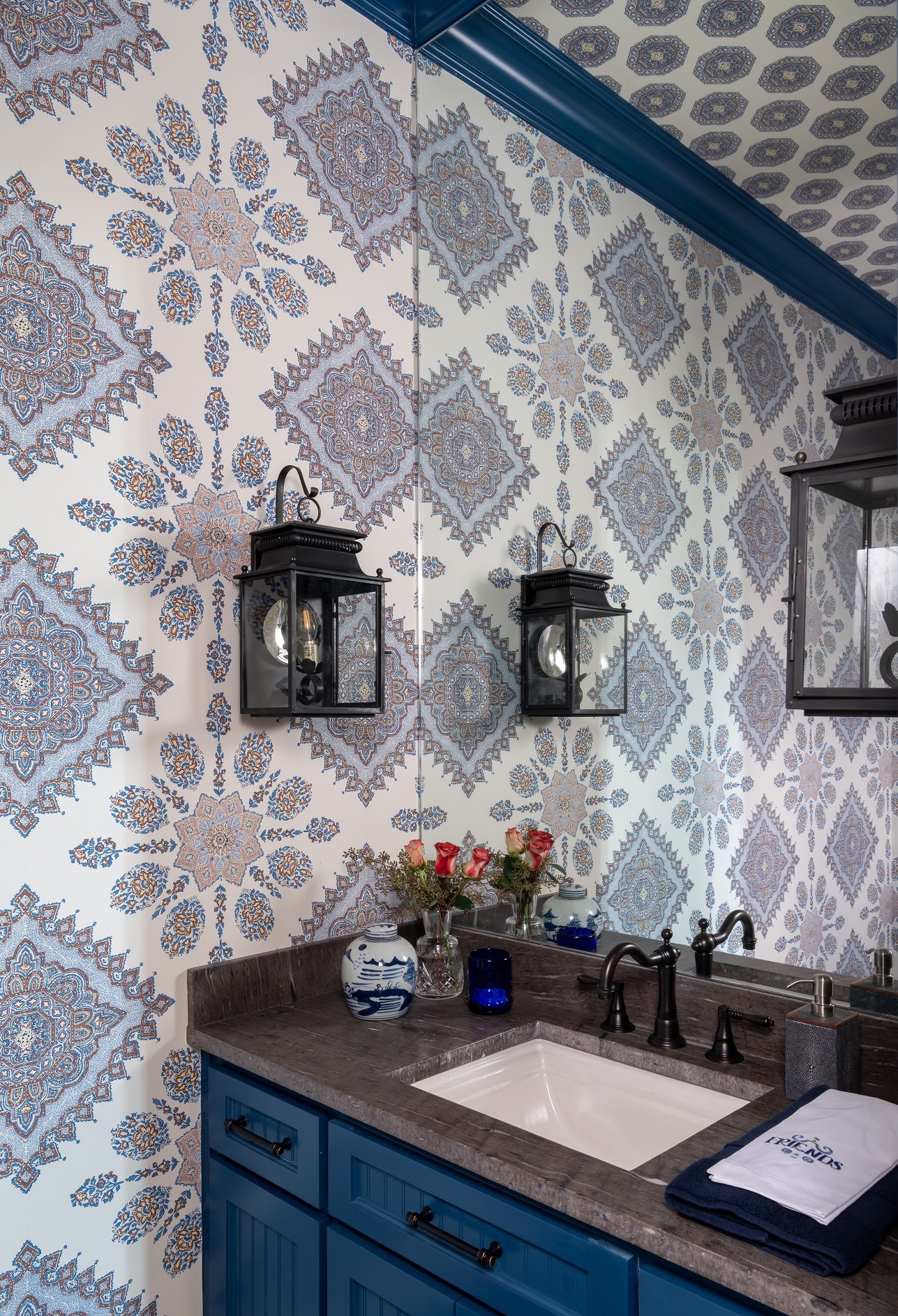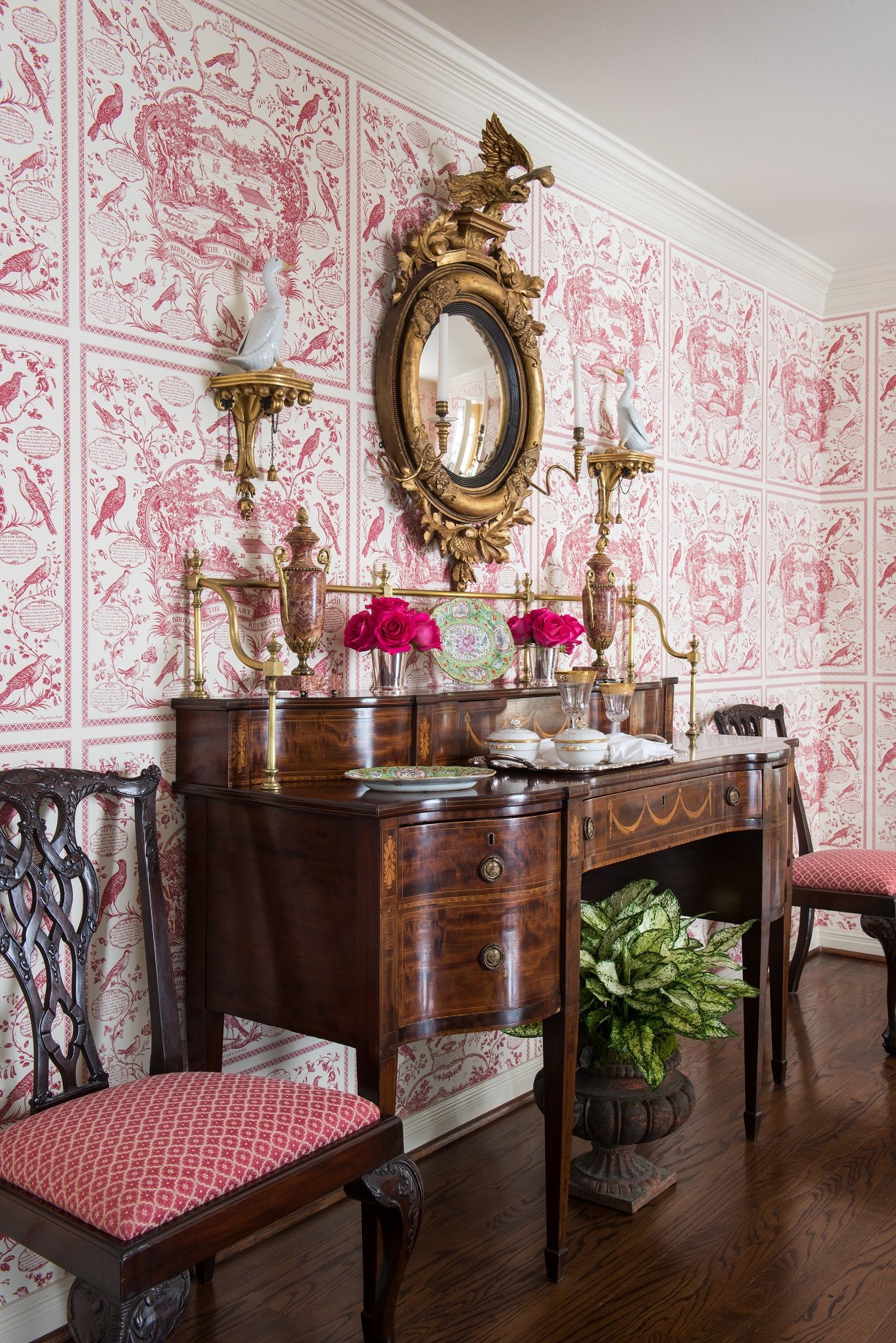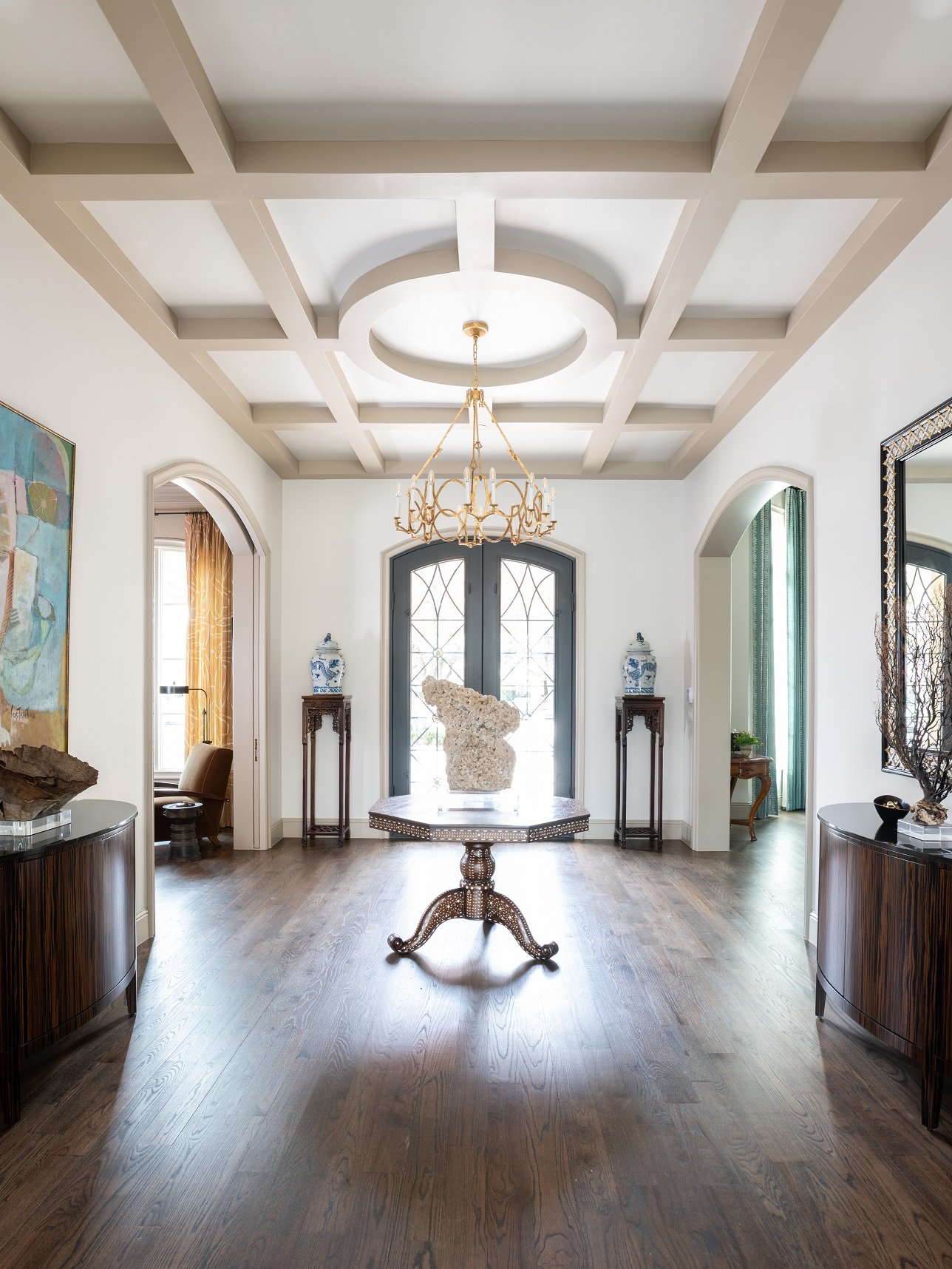Antique mirrors are best for traditional homes, like this English cottage we designed in University Park.
Mirrors are one of those interior design tools that no home can really do without. Even in rooms where you wouldn’t normally need a mirror, they still offer many benefits, such as reflecting more light into the space or making a room feel more expansive. If you’d like to add more mirrors to your home but aren’t sure what kind to buy or where to hang them, read on for some of my personal tips.
Choosing Mirror Size
This mirror in a Dallas home goes all the way up to the ceiling. It makes the small powder room feel twice as large.
As far as size goes, you should usually go for the largest mirror you can afford. Because mirrors tend to recede into the background, you can get away with a large mirror even in a space where a large painting of the same size wouldn’t work. Don’t forget that mirrored walls are an option too — they really open up a small space, like a bathroom.
Selecting Mirror Shapes
In a room with a lot of straight lines, a round mirror will add some much-needed variety.
Mirrors come in a lot of shapes besides rectangular, so consider your options carefully before buying. It’s possible that a round, oval, bull’s-eye, square, or sunburst mirror would be the perfect shape for your wall. At my firm, we sometimes use beveled mirrors with small medallions in the corners.
Finding the Right Mirror Style and Frame
Carved frames like this one can be ‘too much’ for contemporary homes but are perfect for Old World style homes.
The style of your home or room should complement the mirrors you choose. Traditional mirrors, which often have sculpted frames with intricate details, are best for traditional houses, for example. If you have a brand-new mirror that you want to include in a traditional room, you can always have it antiqued. Mirror frames in contemporary or modern homes tend to be more simple and subtle.
Placing Your Mirrors
We placed a painting and a mirror across from each other in this entry so that the painting would reflect in the mirror.
When it comes to finding the right spot for your mirror, you have two options. You should either try to reflect natural light or reflect something decorative in your room. For windowless rooms, you can also put your mirror next to a lamp or sconce to double the amount of light: this is a great technique for lighting up dark corners.
If you’re going to reflect something besides light or scenery, it’s important that your mirror shows something attractive. For example, try to reflect a painting, a piece of pretty furniture, or a beautiful door in your mirror.
Hanging Your Mirror
If you're hanging a mirror above a chest, it should generally be closer to the chest rather than centered on the wall.
How high you hang your mirror depends on what kind of room it’s in. For example, a hallway mirror should be at eye level so that you can check your reflection before you leave the house. If you’re hanging your mirror above a piece of furniture, the mirror should be closer to the furniture than it is to the ceiling. This brings the mirror and furniture together as a vignette. A nice way to fill a large wall is to hang one mirror in the center of a group of small individual paintings or prints.
Mirrors need to be hung with at least two wall hooks or picture hangers. The problem with hanging a mirror on a single hook is that it will end up resting against the wall at an angle, which distorts the reflection. Always have your very heavy mirrors hung by professionals.
Once you’ve learned about the different kinds of mirrors available and how to utilize them effectively, adding that extra touch of luxe to your home will be that much easier. If you could use some help with sourcing antique mirrors or custom mirrors for your Dallas home, give us a call at 214-651-7665 or send an email to info@chambersinteriors.com. I work with a wide variety of interior design styles, so I have a lot of experience with using both traditional and contemporary mirrors.






